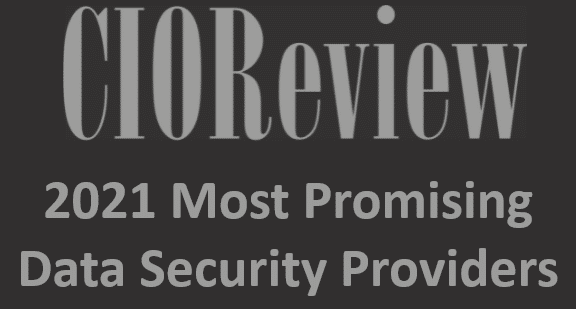
What Are DevSecOps Practices?
05
OCTOBER, 2021
by Alex Doukas
DevOps practices have drastically changed how we approach software development for more than a decade now. The number of companies that benefit from DevOps implementation is growing, and many more want to jump on the bandwagon.
But let’s be clear. DevOps is far from perfect. So, what wre DevSecOps practices?
Security is an absolute necessity in a complex software development landscape where companies push to develop innovative products at speed. DevOps, unfortunately, lacks in this area. Why? Because it doesn’t place security as a top priority and considers it only at the end of a product’s life cycle.
DevSecOps comes to fill this void. Now you can add valuable security to your DevOps practices without losing out on speed, quality, or scalability.
In this post, you’ll see what DevSecOps is all about. You’ll learn what benefits you’ll gain from implementing this method. And finally, you’ll see some of its best practices.
Let’s get things started!
What Is DevSecOps?
Release early, release often is the main development philosophy of most modern software companies. However, as the need for fast and frequent releases grows, it becomes increasingly complex for companies to ensure that their product will remain secure after every new release.
DevSecOps aims to handle this problem by integrating security practices during the early stages of a software development life cycle (SDLC). In other words, it expands your DevOps pipeline and makes security an integral part of your product life cycle, covering the entire process from planning and design to the final release.
Integrating DevSecOps into your organization is, in many cases, easier said than done. That’s because it requires close collaboration as well as crystal clear and timely communication between teams that may have different priorities. It requires a shift in the basic ways that a company operates.
The idea of DevSecOps is that security is a team effort. All members that are part of the product life cycle have an important role to play to ensure secure software releases.
You can read more about the basics of DevSecOps here.
DevSecOps Benefits
Adding security into every phase of software delivery brings a lot of benefits. Below are a few of the most significant.
- Increased software delivery speed: Adding security practices early and during the whole development and delivery pipeline, along with automated processes, minimizes security bottlenecks.
- Reduced vulnerabilities: Successful DevSecOps is based on automation. This allows you to increase code coverage, which eventually will result in reducing vulnerabilities.
- Reduced costs: A business with security issues could face significant financial and reputational damages in case of a cyberattack. Implementing a DevSecOps approach is an investment that can save you money by identifying and fixing security issues early—before they become security weak spots.
- Constant improvement: Continuous measurement is an essential aspect of DevSecOps. Monitoring software success and failure allows a company to develop the best measures to avoid issues during the delivery cycle. Also, metric analysis can help organizations accelerate their software delivery efforts and stand out from the competition.
- Increased sales: DevSecOps ensures that your product will be more secure than before. Users value security, and they tend to prefer products they can trust from this perspective.
- Better security in general: DevSecOps can upgrade your product security holistically. The product is developed with security being a top priority instead of an additional concern.
DevSecOps Practices – What Are DevSecOps Practices?
Integrating security into DevOps pipelines isn’t an easy task. It requires planning and having the right tools. But companies can change their workflows by following some of the most efficient practices in the industry.
Cultural Shift Promotion and Employee Training
In many organizations, the development, security, and operations teams have learned to work independently. Instead, companies should bring teams together to cooperate at all stages, from the beginning of the development process, to address potential challenges. Although this might seem like a small change, it’s the basis for achieving the desired results.
This change requires a cultural shift that happens when you educate teams on the approach’s advantages and cultivate the belief that safety is a shared responsibility of teams from all three disciplines. In time, DevSecOps becomes a logical part of the development cycle once development and operations teams share responsibility for securing code and infrastructure.
Automated Processes and Tool Adoption
In a CI/CD environment, the main goal is to deliver code fast. Adding security to the DevOps workflow mustn’t limit speed, and automation is a great way to achieve that goal. To effectively integrate security checks and tests throughout the development life cycle without delaying processes, organizations should rely on test automation tools, from source-code analysis through integration and post-deployment monitoring.
Check Code Dependencies
Few companies build code from scratch. Many organizations use third-party, open-source application components, which is a very popular tactic in DevSecOps as well. Although this is wise as it saves you time and effort, open source can have significant vulnerabilities. Be sure to check that these components are safe. Here, tools for automated testing that are a prerequisite for DevSecOps can help you identify weaknesses and vulnerabilities in the code, determine how these vulnerabilities affect the dependent code, and help you resolve any issues.
Threat Modeling Application
Threat modeling is the process that helps you identify and prioritize potential vulnerabilities in your application. It’s a very demanding process that is done manually, can’t be automated, and requires the cooperation of developers and security team members. However, it’s crucial to do, as it helps developers see the application through the eyes of an attacker.
Threat modeling can help you identify flaws in the architecture and design of your applications that other security approaches might have missed. Also, it helps you solve them before they become active problems. In addition, it encourages more communication between these often separate groups and helps each side appreciate the importance of the work done by the others.
Vulnerability Assessment
The vulnerability assessment identifies weaknesses in the security of an organization’s systems. This practice involves identifying, analyzing, estimating, and solving security risks. Several vulnerability management tools can help you detect weaknesses in your application.
Compliance Monitoring
Compliance monitoring helps you check if your organization is aligned with industry regulations such as GDDR and PCI DSS. DevSecOps enables you to evaluate and define which compliance requirements apply to your organization.
Incident Response
The incident response describes measures that companies take to prevent security incidents, data breaches, and so on from escalating and causing further damage. Having a clear response to incidents allows you to assess the situation and mitigate the damage while reducing the overall cost of the attack. Finally, it helps you prevent a repeat of the incident by adjusting your plan.
Code Simplification
Simplifying your code will make the debugging process much more manageable. Furthermore, clean and simple code will reduce security risks because developers will be able to find and solve potential problems quickly and efficiently.
Summing Up and Learning More
There’s an increasing need for software security. Having a DevSecOps strategy is a great way to achieve better security overall. It’s becoming more important in organizations that realize how crucial security is to their business and their customers. Successful implementation certainly isn’t easy, but in the end, the benefits outweigh the challenges.
Enov8 offers a data and compliance platform for DevSecOps that can help you adopt best practices and get the most out of them. Learn how Enov8 can help you in your pursuit of secure software applications.
Post Author
This post was written by Alex Doukas. Alex’s main area of expertise is web development and everything that comes along with it. He also has extensive knowledge of topics such as UX design, big data, social media marketing, and SEO techniques.
Relevant Articles
DORA Compliance – Why Data Resilience is the New Digital Battlefield
How Enov8 Helps Financial Institutions Align with the EU's Digital Operational Resilience Act Executive Introduction As of January 2025, the EU's Digital Operational Resilience Act (DORA) has become legally binding for financial institutions operating across the...
Data Fabric vs Data Mesh: Understanding the Differences
When evaluating modern data architecture strategies, two terms often come up: data fabric and data mesh. Both promise to help enterprises manage complex data environments more effectively, but they approach the problem in fundamentally different ways. So what’s...
What Is Release Management in ITIL? Guide and Best Practices
Managing enterprise software production at scale is no easy task. This is especially true in today’s complex and distributed environment where teams are spread out across multiple geographical areas. To maintain control over so many moving parts, IT leaders need to...
Test Environment: What It Is and Why You Need It
Software development is a complex process that requires meticulous attention to detail to ensure that the final product is reliable and of high quality. One of the most critical aspects of this process is testing, and having a dedicated test environment is essential...
PreProd Environment Done Right: The Definitive Guide
Before you deploy your code to production, it has to undergo several steps. We often refer to these steps as preproduction. Although you might expect these additional steps to slow down your development process, they help speed up the time to production. When you set...
What is Data Tokenization? Important Concepts Explained
In today’s digital age, data security and privacy are crucial concerns for individuals and organizations alike. With the ever-increasing amount of sensitive information being collected and stored, it’s more important than ever to protect this data from...










